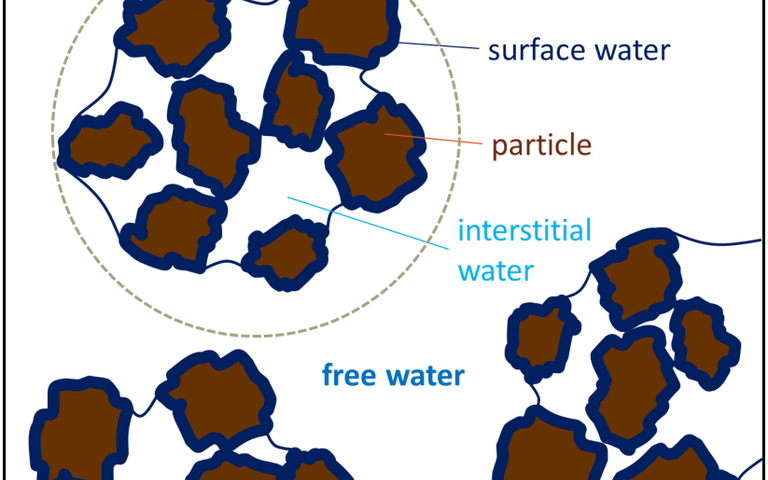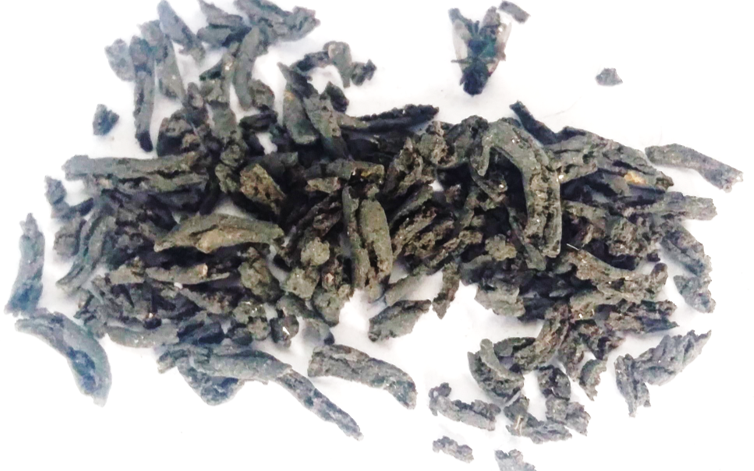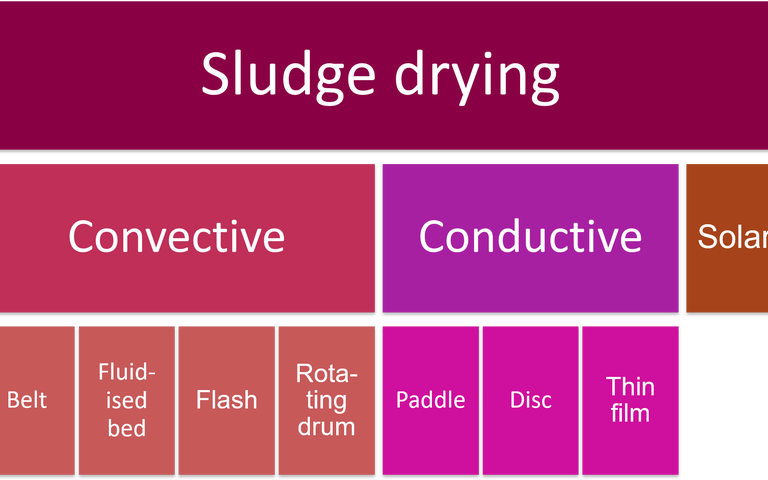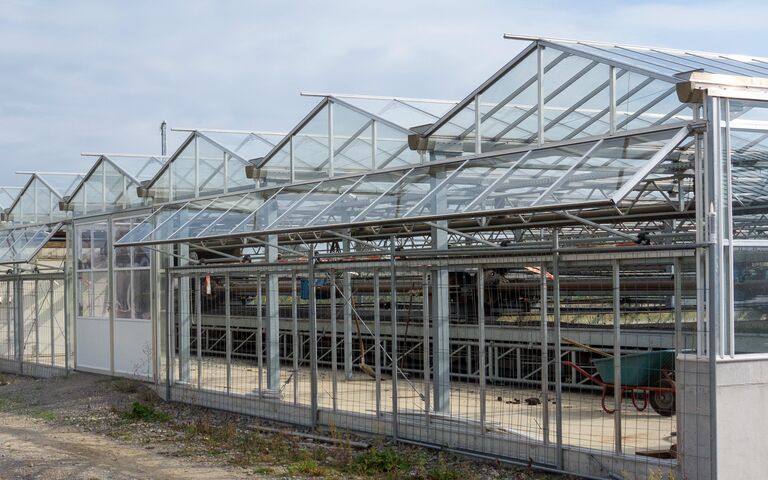
Sludge drying
An overview of sludge drying − an introduction to sludge drying theory and technologies
Your web browser is out of date.
Update your browser for better security, speed and to get the best experience on this website.
Solar dryers take the form of large greenhouses into which the sludge is fed either continuously or in batches. Solar drying provides the lowest energy demand of all dryers, as low as 50 kWh/t, but incurs a large footprint due to the constraints on the available thermal energy. Although heating is provided at zero or minimal cost, energy is demanded by both the mechanical agitation of the sludge solids and deodorisation of the exhaust air. Supplementary heating, often using a waste heat source, is often needed to sustain a reasonable drying rate.

An overview of sludge drying − an introduction to sludge drying theory and technologies

Processes where moisture is removed from sludge as water vapour are known as 'sludge drying'

When sludge dries, it goes through three different phases as the water evaporates

Sludge drying processes operate at solids temperatures of 60-93 °C to encourage water to evaporate and leave a solid residue

Sludge drying processes are generally configured as convective, conductive, or as solar dryers

Solar dryers make use of renewable solar energy to dry sludge and need a larger footprint to allow for increased drying times
A video to demonstrate the principles of the OTEX solar sludge dryer.
Convective (or direct) dryers remove moisture from sludge by bringing the sludge particles into direct contact with hot gas
Belt dryers comprise a conveyor belt which slowly transports the sludge solids through a stream of heated air
Flash dryers use a rapid stream of rising hot air which both suspends and dries the solids.
In fluidised-bed dryers the sludge particles are gently agitated and heated by a stream of upward-flowing pre-heated gas
Rotating drum dryers have a drum rotating at 4-8 RPM through which the sludge passes along with a stream of warm air
For conduction drying, the sludge is heated indirectly by bringing it into contact with a heated surface
Disc dryers are based on vertical externally-heated discs or rings rotating in the sludge as it passes through the dryer.
Paddle dryers are based on externally-heated paddles rotating in the mass of sludge solids held in a stationary vessel
Pelletizers
Conditioning is the pretreatment of sludge upstream of thickening and dewatering to promote solid-liquid separation
Thickening processes concentrate the sludge by removing part of the free water, such that the product can still be pumped
Dewatering processes mechanically remove a significant proportion of the sludge water to produce a 15-45% cake product
In sludge drying the sludge moisture is removed as water vapour by heating, generating a pelleted or powdered product
Sludge stabilisation − alkaline stabilisation, lime and solids dosing, plus anaerobic and aerobic digestion
Thermochemical methods are used to either significantly reduce the sludge solids content or pre-treat sludge upstream of AD
Sludge is the main waste stream from the treatment of wastewater